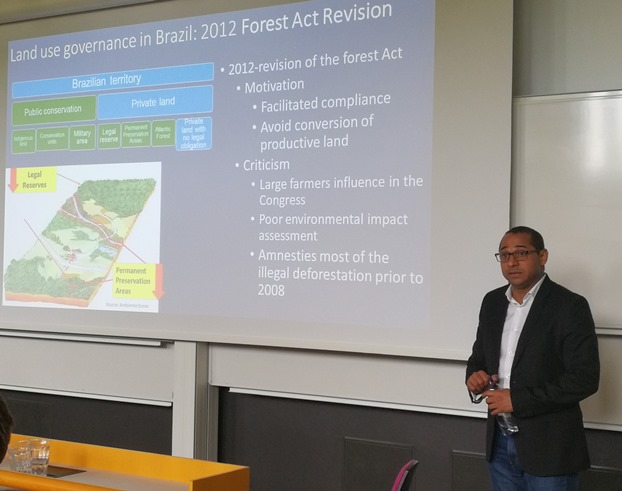Brazilian land use policies and the development of ecosystem services

Licentiate seminar
Time: Fr 2017-06-09 kl 13.00
Place: V1, Teknikringen 76, KTH
Subject: Mark- och vattenteknik
Respondent: Flavio Luiz Mazzaro de Freitas
Reviewer: Docent Martin Persson, Chalmers tekniska högskola, Göteborg
Main supervisor: Associate professor Ulla Mörtberg
The "spikblad" is available here (pdf 131 kB) , the thesis can be found here , and more information about the project is available . The research is conducted within the , SEED, KTH; in cooperation with University of São Paulo, Brazil; and Chalmers University of Technology, Göteborg.
Welcome to the licentiate seminar!
/Ulla Mörtberg

Abstract
Concerns related to global environmental changes due to land use changes have been driving international communities towards more sustainable land use systems. Brazil is a country of global strategic importance in this matter considering that it is the nation with the largest extension of preserved tropical native vegetation, recognised for its ecosystem services and high and unique biodiversity values. Expansion of forestry and agriculture is taking place rapidly in Brazil, partly over degraded pastureland, but to a large extent over native vegetation. Regulating policies to govern and limit this expansion is crucial to ensure the preservation of the ecosystems services provided by native vegetation. This thesis aims at improving the understanding of the potential impacts of prevailing public and private policies in the conservation of nature in Brazil. For this purpose, the Land Use Policy Assessment (LUPA) model was developed to evaluate potential scenarios of implementation of the current land use policies in Brazil. Paper 1 evaluated the effects of current private and public command and control regulations in the protection of above-ground carbon stocks, identifying the most relevant stakeholders holding carbon stocks. The findings suggest that about 10% of carbon stocks are unprotected, where other policy instruments based on the market will be mostly required. Paper 2 performed an assessment of the mechanism for offsetting the legal deficit of native vegetation among landholders, evaluating the different offsetting implementation practices and their impacts on nature protection and socio-economic development. The results indicate that the offsetting mechanism may have little or no additional effects on protection of native vegetation and its ecosystem services because most of the offsetting is likely to take place where native vegetation is already protected by current legislations. However, the results demonstrate that it is viable to maximise environmental and socio-economic returns from the offsetting mechanism.
